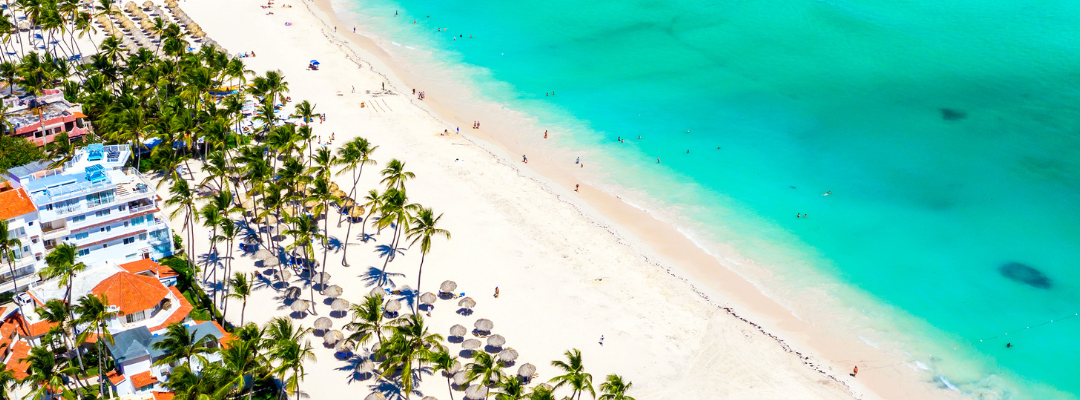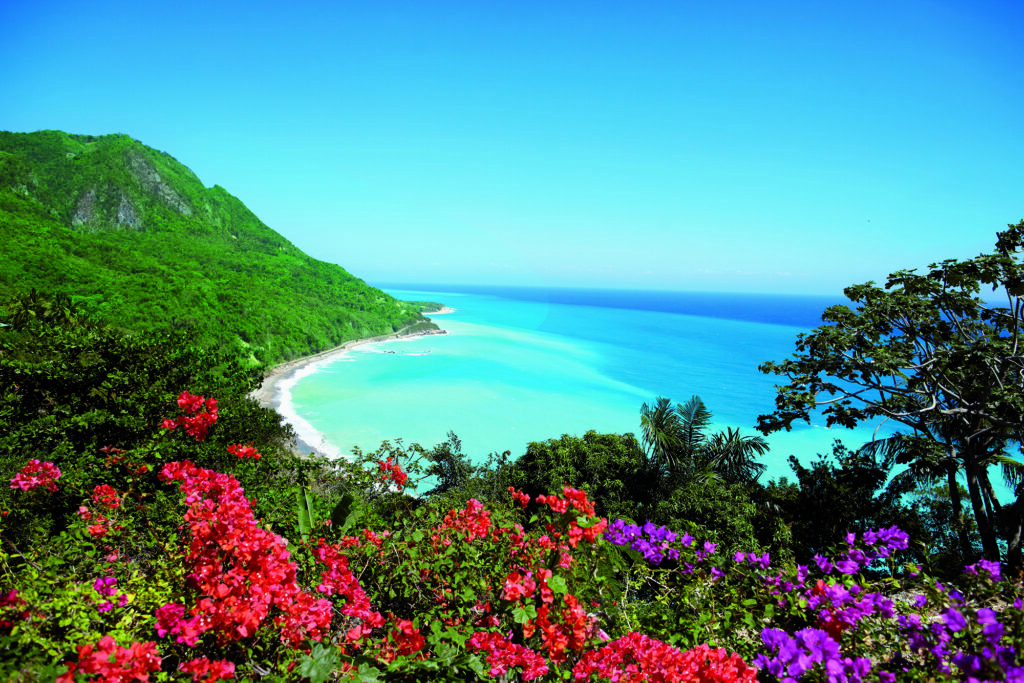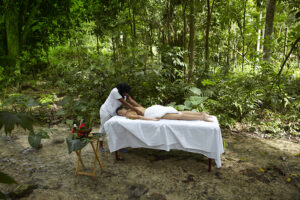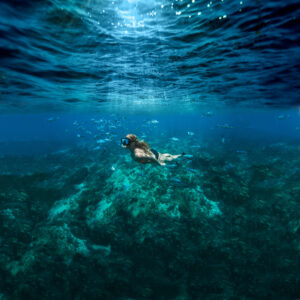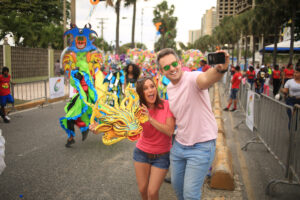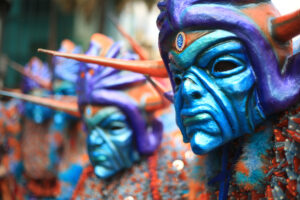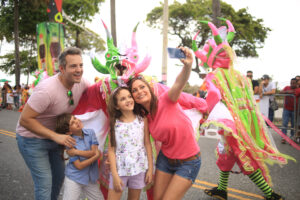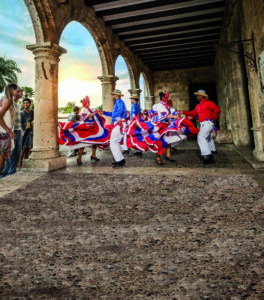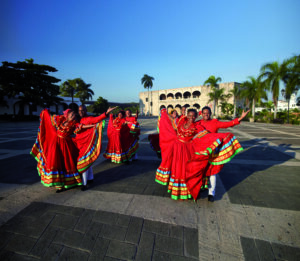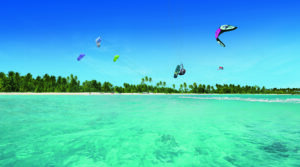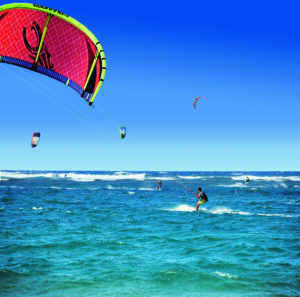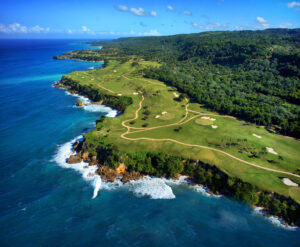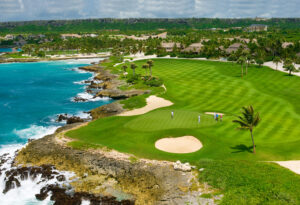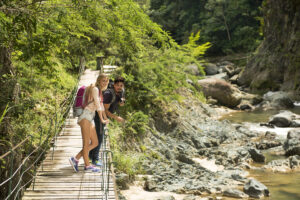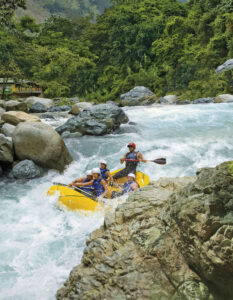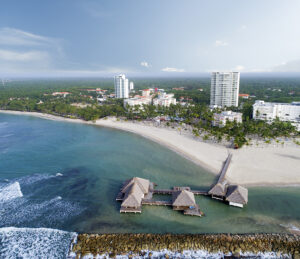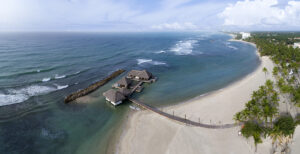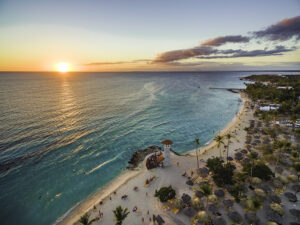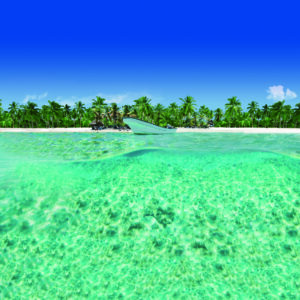- About
- DEALS
- Getting Here
- Things To Do
- Gallery
- Contact

Fast Facts About Dominican Republic
Capital
Santo Domingo
Currency
DOP: Dominican Peso
Population
9,927,320
Language
Spanish
Timezone
GMT – 4
Flight Duration
9 hours 15 minutes from Gatwick
Dominican Republic is the second largest and most diverse Caribbean country, situated just two hours south of Miami, less than four hours from New York and eight hours from most European cities. Known for our warm and hospitable people, Dominican Republic is a destination like no other, featuring astounding nature, intriguing history and rich culture.
Surrounded by the Atlantic Ocean on the north and the Caribbean Sea on the south, our lush tropical island paradise boasts nearly 1,000 miles (1,609 km) of coastline, 250 miles (402 km) of the world’s top beaches, magnificent resorts and hotels, and a variety of sports, recreation and entertainment options. Here you can dance to the pulse pounding thrill of the merengue, renew in our luxurious and diverse accommodations, explore ancient relics of centuries past, delight in delicious Dominican gastronomy or enjoy ecotourism adventures in our magnificent national parks, mountain ranges, rivers, and beaches.
Average Weather in Dominican Republic
Jan
30° C
Avg Rain:
61mm
Feb
30° C
Avg Rain:
36mm
Mar
30° C
Avg Rain:
48mm
Apr
31° C
Avg Rain:
99mm
May
31° C
Avg Rain:
173mm
Jun
32° C
Avg Rain:
158mm
Jul
32° C
Avg Rain:
163mm
Aug
32° C
Avg Rain:
160mm
Sep
32° C
Avg Rain:
185mm
Oct
32° C
Avg Rain:
152mm
Nov
31° C
Avg Rain:
122mm
Dec
30° C
Avg Rain:
61mm
Holiday Highlights
No Offers Found at the moment, please try again later!
Airports:
EIGHT INTERNATIONAL AIRPORTS:
SANTO DOMINGO
Las Américas International Airport (SDQ) –also known as José Francisco Peña Gómez International Airport–is located 30 minutes from the capital of Santo Domingo, and is the city’s main point of entry for international air arrivals. SDQ is also convenient to the tourist beach towns of Boca Chica and Juan Dolio, starting just six miles away.
La Isabela International Airport (JBQ) –also known as Dr. Joaquín Balaguer International Airport– is located north of Santo Domingo, and handles flights to Haiti, Cuba, and select neighboring Caribbean islands.
PUNTA CANA
Punta Cana International Airport (PUJ) is a 15-minute drive from the Punta Cana and Cap Cana areas, a 30-minute drive from Bávaro, El Cortecito, and Arena Gorda, and a 45-minute drive from the Macao and Uvero Alto areas. Offering direct flights from over 28 countries and 96 cities around the world, this is the busiest airport in the Dominican Republic and the second busiest in the Caribbean region, with nearly 3.5 million international passenger arrivals every year.
PUERTO PLATA
Gregorio Luperón International Airport (POP) is conveniently located 20 minutes from the north coast city of Puerto Plata, and near neighboring tourist destinations such as Cofresí, Playa Dorada, Sosúa, and Cabarete. It is also convenient to Playa Grande and Río San Juan, an hour away by road.
LA ROMANA
La Romana International Airport (LRM)–also known as the Casa de Campo International Airport–is strategically located on the southeastern coast, a mere 10-minute drive from Casa de Campo Resort & Villas, and a 20-minute drive from Bayahibe. The airport is also less than two hours’ drive from Santo Domingo, and less than an hour’s ride from Punta Cana.
SAMANÁ
El Catey International Airport (AZS) – also known as Juan Bosch International Airport –sits half an hour away from the city of Santa Barbara de Samaná, 30 minutes from Las Terrenas, and just an hour’s drive to Las Galeras.
SANTIAGO
Cibao International Airport (STI) is 15 minutes from bustling Santiago, the second largest city in the Dominican Republic, tucked in the mountainous center of the country. It is closest to the nearby cities and towns of La Vega, Jarabacoa, and Constanza. It can also be a second gateway option if you are staying in Puerto Plata–just ensure additional transportation time before your return flight.
Manchester
8 hours 45 minutes
Gatwick
9 hours 15 minutes

Things To Do In Dominican Republic
Nightlife

Music and dancing are an integral part of everyday life in the DR. Whether you find yourself in Santo Domingo, the hub of nightlife and live performances, or in a small village in the center of the country, Dominican beats will echo from corner stores to local clubs, while people dance indoors or even outdoors in parks and public spaces. Experience folkloric music every Friday and Saturday night in Santo Domingo on Plaza de España, or dance the night away to a live son and merengue band on Sundays by the ruins of San Francisco. Bar hop and party in Santiago’s downtown, or discover the “drink” lounges of Puerto Plata, where merengue and bachata dominate. Beach nightlife takes on new meaning in Cabarete, where you can party the night away at a range of bars along the waterfront. Punta Cana’s glitzy nightclubs and marinas are equally popular, pumping house music or offering sophisticated wine bars.
Dining
There is a plethora of Dominican dishes, ranging from soups and stews to street side fried snacks, and sweet coconut desserts. Beyond the classic Caribbean rice and beans plate are staple specialties unique to the DR. Familiarize yourself with a few of the Dominican’s staples, from table to roadside, to best enjoy your culinary adventure around the country.
